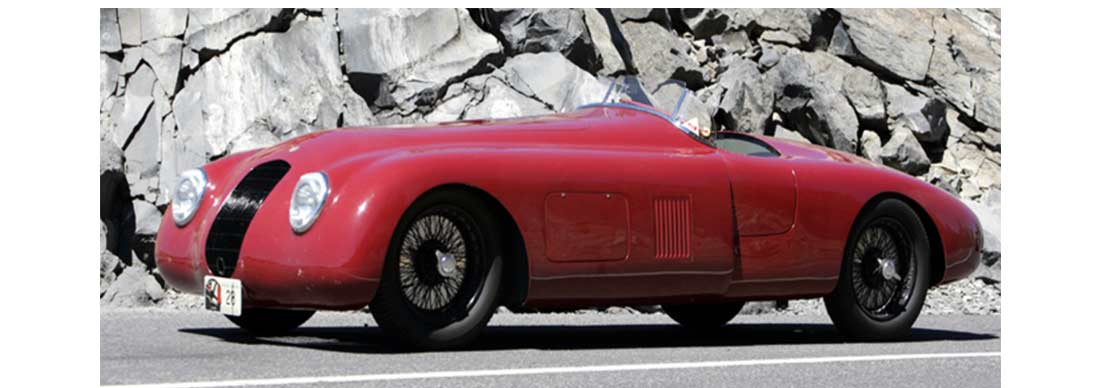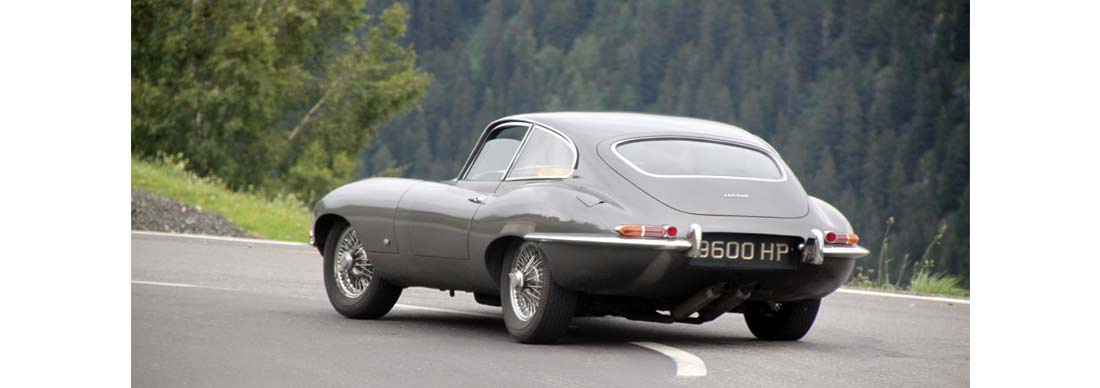
Was the C-type a work of art or an aerodynamic sports-racing car?
STOP PRESS (23/03/23): We are exceptionally pleased to say that the Magnussons have won their appeal against the lower Swedish court's decision in favour of JLR with regard to their C-type replica which JLR were insisting they must destroy. Not only have the Magnussons won the case but they have been awarded considerable costs. It is, though, not all good news. It seems that this court accepts JLR have copyright in the C-type design (which they incorrectly credited in its entirety to Malcolm Sayer) and so in theory no-one can now build C-type replicas commercially. The Magnussons won because private use of a copyrighted item is permitted. It seems that the Magnussons have bravely won their battle but the larger community may have lost the war.
In the last two issues, we have covered the ongoing situation with JLR issuing, we are informed, ‘cease and desist’ communications not only to builders of C-type replicas but also to those selling artwork featuring Jaguars and Land-Rovers.
We have been sent a copy of a communication that is alleged to have been written by JLR’s Swedish lawyers and sent to a dealer in that country who sold two secondhand C-type replicas. We have had it independently translated. An engineer at JLR told us it would be a forgery. We have no means of knowing, at this stage whether it is a forgery or not. A retired British lawyer has offered the opinion that it could only have been written by a lawyer. Meanwhile, a heavyweight investigative journalist is being commissioned to look into all the evidence and those involved.
Quoting one short passage from this communication that is alleged to be from the Swedish JLR lawyers, it reads: ‘You have through your marketing and selling of the replicas made these available to the public, which in our considered interpretation infringes on Jaguar’s exclusive right under the copyright act. You have through the photographs also produced copies of Jaguar C-type and made these available to the public. In the case of an infringement Jaguar has the possibility to forbid further use and marketing of the infringing products and you can be given the duty of paying damages for use of the work and other harm. Further the court can, among other things, decide that the infringing products be recalled, changed or destroyed.’
Our understanding (and we are not lawyers) is that the legislation used by JLR to win their copyright case in Sweden was originally intended to protect works of art, not 3D objects such as cars. Therefore, it was necessary for JLR’s expert witness to claim that the C-type was a work of art created by Malcolm Sayer.
The following are interesting extracts taken from what we have been sent, and are from what are alleged to be the expert witness’s two statements.
‘The C-type had none of the features of the older, traditional Le Mans-type sports-racing cars. It’s voluptuous all-enveloping body, with smooth sides and faired in headlamps, departed radically from that format and set a new direction for the design of open sports-racing cars.’ [We have emboldened this text]
‘It is my professional opinion that the Jaguar C-type's design is the result of independent artistic intellectual creation by the designer Malcolm Sayer and that he, through free creation, has put his personal touch on the design.’
‘...Sayer's skill allowed him to find some subtle design cues in its DNA without compromising its aerodynamic performance, or indeed the beauty of the car. The body still exhibits clear surface differences [from the XK 120] that gives the car a highly dynamic look – this was all due to Sayer's artistic input. The entire body surface is a continuous soft form of valleys and crests, without sharp creases, which is quite distinctive from the XK 120.’
‘The mounting of the headlamps and foglamps behind Perspex covers on the C-type not only provided a unique new 'face' to the car, which is aesthetically pleasing, but improves the aerodynamics and disguises the Lucas lamps fitted behind. It is a good example of Sayer's skillful approach to design.’ [We have emboldened this text]
‘...I maintain the C-type went on to influence many subsequent sports-racing cars in the following couple of years after its debut in June 1951 ... particularly the use of covered headlamps and softly flowing curves.’
‘I disagree with the defendants' statement regarding the louvres. The louvres are part of the graphics of the design. A designer has some latitude in the shape and placing of air ducts and these louvres form part of the overall aesthetics of the C-type. It is a simplification to state this feature is driven solely by functional requirements.’
‘I disagree with the statement that the C-type developed for Le Mans in 1952 with the rear sloping overhang (see image below) is an example of the fact that it was not the aesthetics that governed the design of the C-type but the function to achieve a technical result. The 1952 Le Mans race cars were modified to improve top speed and this redesign allowed Sayer to introduce his next step in the design evolution of Jaguar sports-racing cars. The elongated low nose continues Sayer's theme of softly intersecting elliptical curves. They were unsuccessful due to poor radiator plumbing, not Sayer's body design.’

Above: the ill-fated 1952 long-nose, long-tail Le Mans C-types
The following five images were supplied to us by pre-eminent motoring historian and author, Doug Nye, as examples of integrated wing designs which pre-dated the 1951 C-type.

Above: 1947 Cisitalia 202. Photo: courtesy RM-Sotheby’s


Above: 1941 Alfa Romeo 8C-2900 Balena (‘whale’)

Above: 1947 HRG Aerodynamic.

Above: Ferrari’s 1948 Targa Florio-winning 166.

Above: It is also interesting to illustrate the Pycroft-Jaguar which won the very first race at Goodwood, in 1948. Paul Pycroft always claimed that his design, which he fitted to his SS Jaguar 100, was copied by Lyons when he created the XK 120.

It is also fascinating to look at other cars that pre-dated the C-type and could have influenced Sayer. We have already illustrated the ‘Tank’ Bugattis in previous issues. These images are taken from The Le Mans Model Collection, which we published in 2016.
Above: How many people realise that a post-war Alvis competed at Le Mans? This is the 1949 TA 14.

This 1949 Talbot-Lago Coupe GS had the misfortune to retire during the 24th hour when the head gasket expired.

Above: This D.B. Tank was powered by a 4-cylinder 1,490cc Citroen engine and finished 14th in 1949.

Above: The 1949 Monopole Sport is particularly interesting. The headlamps appear to be hidden behind grilles and are thus faired in. There is even a head fairing behind the driver, pre-dating the D-type by five years.

Above: Another sports racer that competed at Le Mans in ‘49, the Simca-Gordini TMM.

Above: Moving on to the 1950 Le Mans race, the well-known Mille Miglia Frazer Nash is quite reminiscent of the C-type.
The more you learn about the motor car, the more you realise that nothing is new, and how little one knows!

Above: As a parting shot, here is a Simca with faired in headlamps. So this was not a feature unique to the C-type. The date? 1949. Photo: courtesy Artcurial
And as a final comment, Malcolm Sayer hated to be called a stylist; he said he was an aerodynamicist.
Click here for other C-type Replica articles





2 comments
Hello Philip Porter
(I am aware about the replica fight and I know the Magnussons well. I like to contribute with my comments and photos in the “C-type work of art or aerodynamic” string.
I don’t understand where to put the photos?)
It can also be noted that the original Saab prototype of 1946 featured faired in headlamps almost identical to the C-type. Saab was early with giving their cars an aerodynamic shape – perhaps something an aerodynamicist such as Malcolm Sayer was aware of?
The C-type was probably also inspired by similar front and lamps as in the 1948 Fiat by Roselli and the 1938 Fiat 500A barchetta by Colli. When it comes to the C-type side and faired in headlamps there was an almost identical forerunner in the 1950 Talbo Lago T26 Grand Sport Barchetta by Motto.
Any statements about the C-type being unique and a trendsetter are simply not true.
Mats Rexon, Jaguar enthusiast and XK140, Mk8 owner
Mats Rexon
Fantastic story and work regarding this insane step taken by Jaguar. I guess this only shows that the company no longer has any enthusiasts left but pure businessmen. The detail that have made the life for owning a classic Jaguar so much easeier compared to german made cars in the past. To bad that they haven’t understood that their heritage project is made possible only on the base of enthusiasts and highly skilled craftmanship.
I suppose and hope the badwill in this story is superior to what Jaguar were hoping to gain.
Alberten Johan
Leave a comment
This site is protected by hCaptcha and the hCaptcha Privacy Policy and Terms of Service apply.